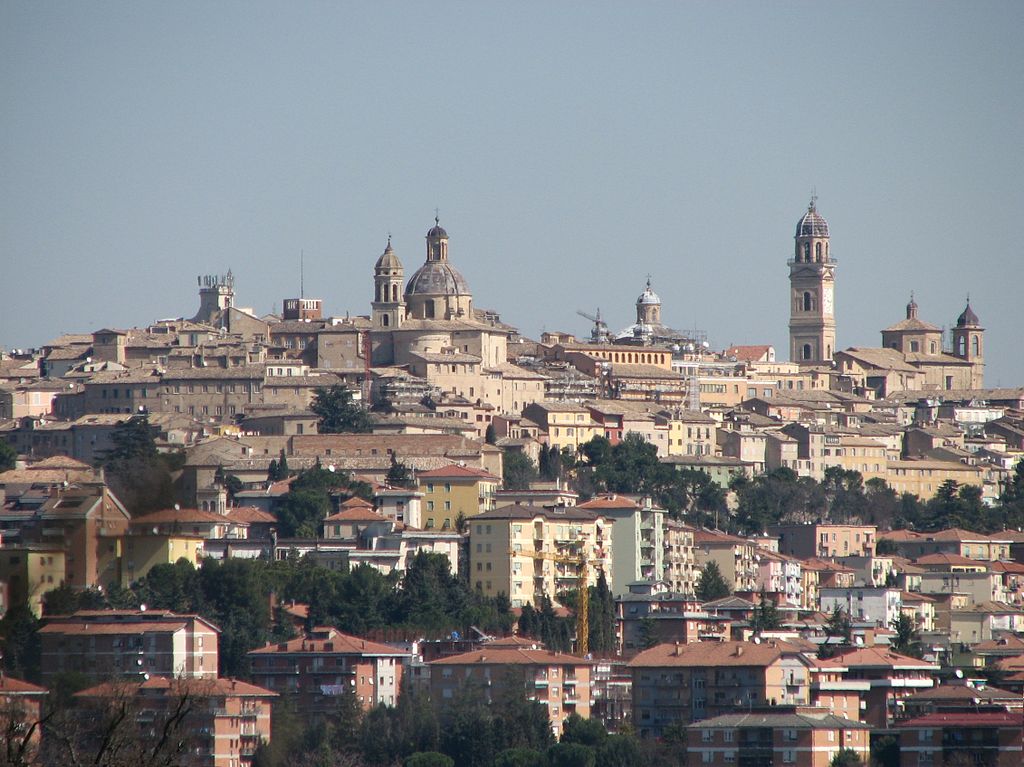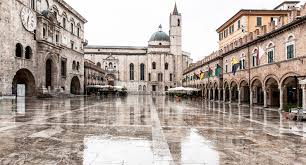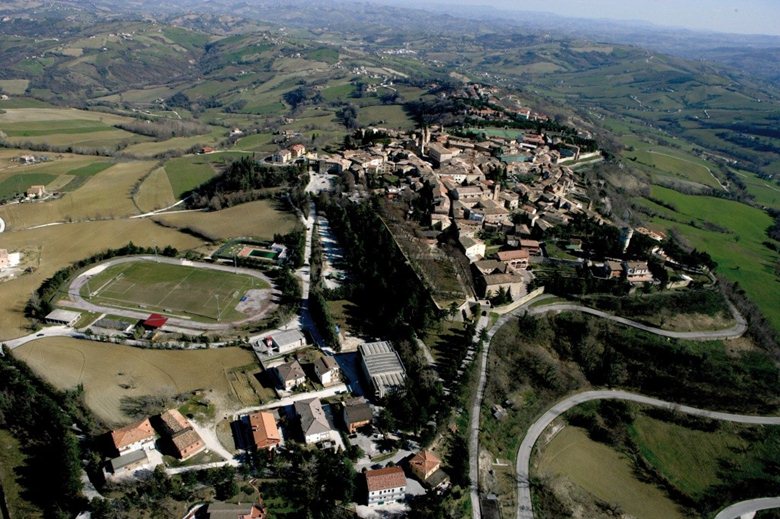
Macerata is a university city (founded in 1290) as well as the capital of the province of Macerata. The City is situated 315 meters above sea level. The Adriatic Sea is approximately 30 kilometers away.
Within the city walls it is pleasant to stroll and in the central square (Piazza della Libertà) you find beautiful palazzi as well as the “Loggia dei Mercanti”. There are several churches including the cathedral of Macerata.
Macerata is known for the open-air opera festival during the summer months. The performances are staged in the Arena Sferisterio. This arena has 2500 available seats and was built in the beginning of the 19th century. The first opera performed in 1921 was Verdi’s Aida. You can find more information at www.sferisterio.it
Macerata is the starting place for the annual pilgrimage to Loreto on the first Saturday of June. This 27 km long journey was started in 1978 by students to thank Providence for their good results.
Fermo is the capital of our province and lies 319 meters above sea level. The oldest human remains date from the Etruscan period (8-9 century BC). A Roman colony was founded in 264 BC.
The Roman cisterns are amongst the largest and best preserved in Italy. They were built in the 1st century AD and consist of 30 underground rooms for around 3000 mq of water.
On the Piazza del Popolo you find the beautiful Palazzo dei Priori, the oldest palazzo in the city. It houses the Pinacoteca Civica where “The Adoration of the Shepherds” by Pieter Paul Rubens can be admired.
The cathedral of Santa Maria Assunta has a Gothic facade and is built on the remains of an early Christian basilica. The remains of the old basilica can still be seen. The church is located on top of a hill and offers a fantastic view of the city and the surrounding area.
The teatro dell’Aquila is one of the most important 18th-century theaters in Central Italy and can accommodate 1000 people.


Loreto
The city is an important place of pilgrimage for Catholic believers. During the Crusades, the Holy House in which Jesus grew up was brought to Europe by ship and not by angels. The house was placed on a hill and the city of Loreto was founded.
The Basilica della Santa Casa was built at the end of the 15th century. The richly decorated dome is the third largest one in Italy. In the center of the basilica stands the ancient Holy House, surrounded by a marble shell for protection.
Next to the church is the Sala del Tesoro, a 17th century treasure room with beautiful frescoes.
A military fortress was erected around the basilica to defend the sanctuary. This is unique. Through the corridors in the fort you have beautiful views to, in case of clear weather, the Gran Sasso in Abruzzo.
In the Piazza della Madonna you find a baroque fountain that is supplied with water that travels several kilometers underground before it rises to the fountain.
Ascoli Piceno is the southernmost city in Le Marche and also the capital of the province of the same name. This region was already populated in the Stone Age. It was said to have been founded by the Sabines who were led by a woodpecker (picchio), the holy bird of the god Mars. The city was situated along Via Salaria, the connection between the Adriatic coast and the salt pans of the Tiber. In 49 BC she was designated by Julius Caesar as the region’s capital.
The place is called the “city with the 100 towers”. There are no fewer than 27 churches. Most of the buildings in the old center are made of travertine from the surrounding mountains. The Piazza del Popolo is one of the most beautiful squares in Italy and dates from the Renaissance. On this square you will find the 13th century San Francesco church, a good example of the transition from Romanesque to Gothic architecture. Another beautiful building is Caffe Melleti. The interior is a pearl in Liberty style, the Italian Art Nouveau. The ideal place for an aperitif, ice cream or other goodies. Below the square you can see ancient Roman remains via the Palazzo dei Capitani.
The Piazza Aringo is also worth a visit. It was the religious and administrative center of the old town and is surrounded by the cathedral, the bishop’s palace and other historic buildings. Francis of Assisi spoke to the population on this square in 1215.


San ginnesio
This walled town is also called “the balcony of the Sibilini”. The views of this mountain range from the city walls are indeed breath taking. The center of the town is situated 680 meters above sea level and it is a pleasant to stay in the small streets. The Palio di San Ginesio is yearly organized in August. During 5 days 4 teams (Quattro Porte) are fighting for victory. The competition consists of medieval combat games. According to certain sources, this event has been around since 1258. More info can be found on;
Urbino
